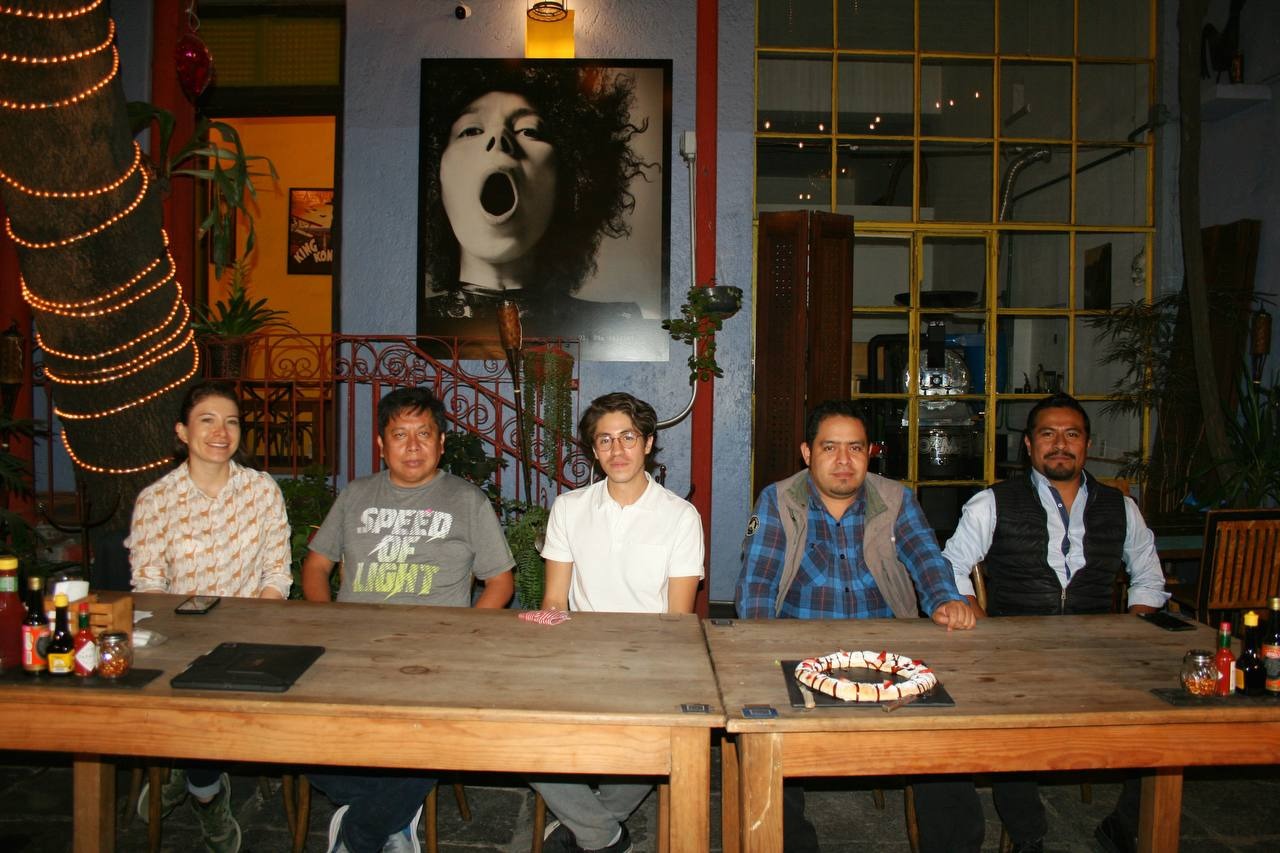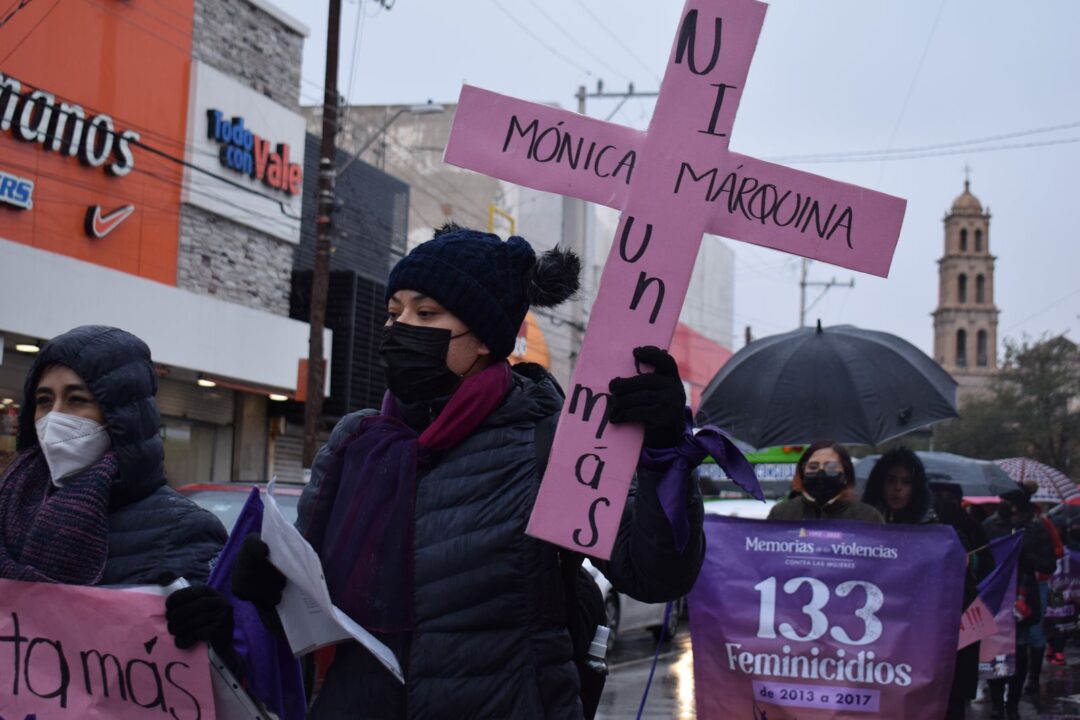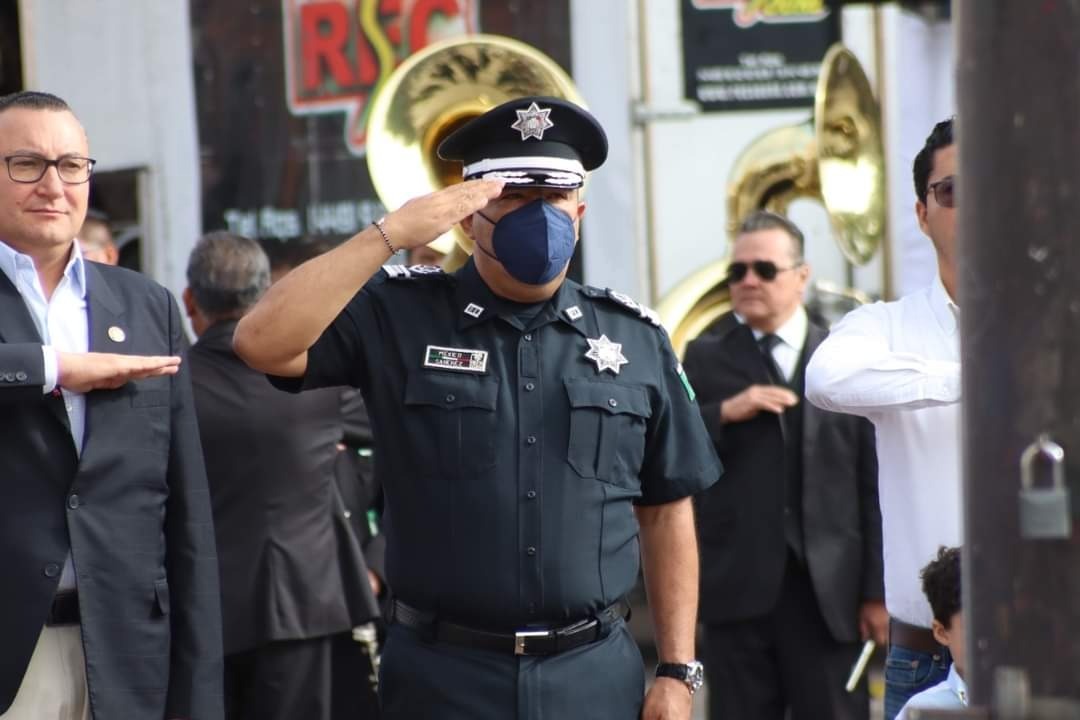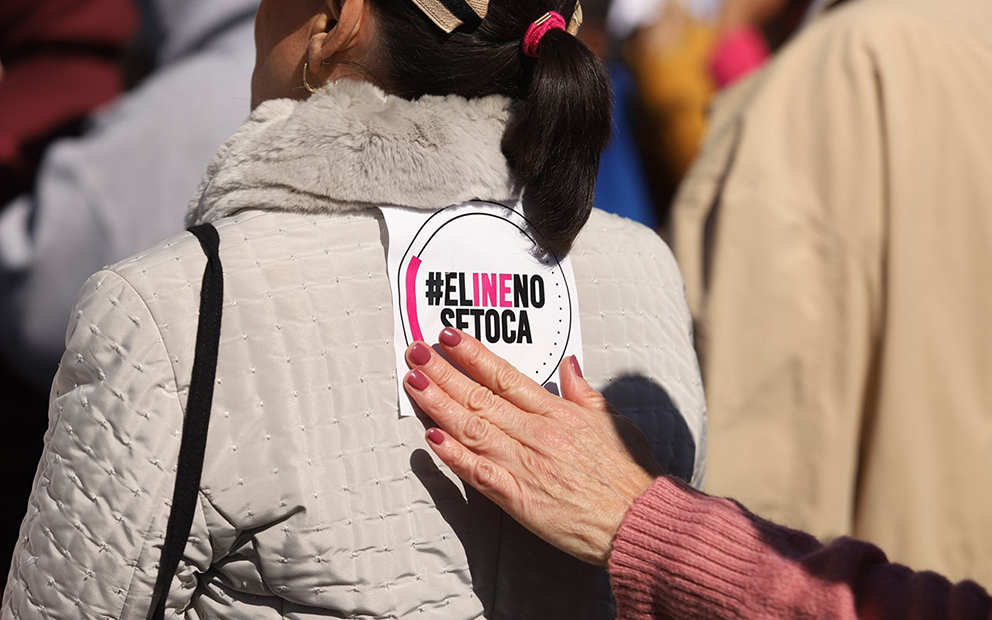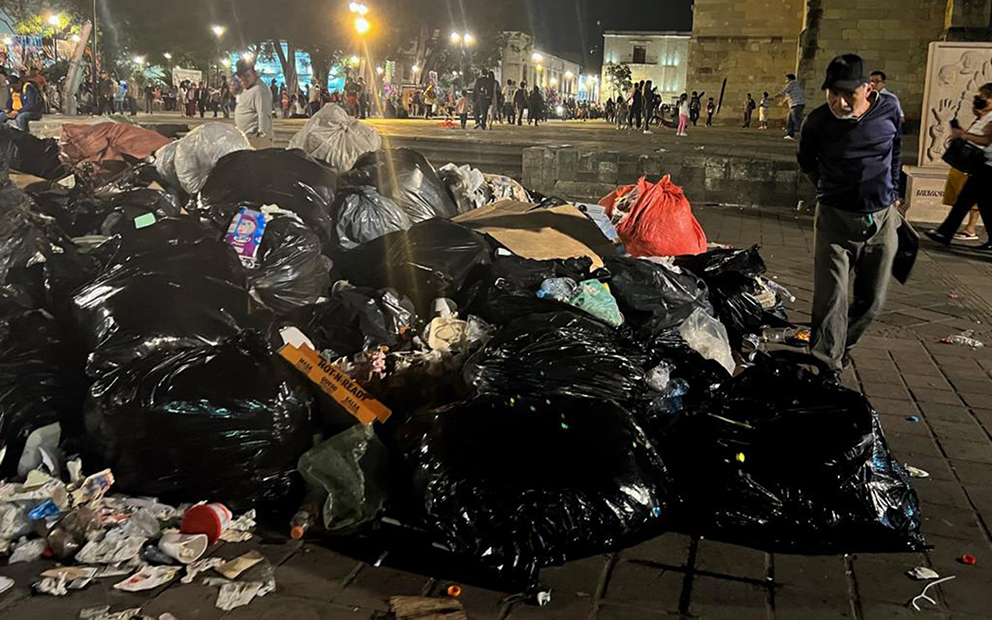In a round-table discussion and forum organized by Pie de Página, representatives of towns and urban areas, from Mexico City and beyond share their experiences in defense of water against urbanization projects and megaprojects.
Text: Pie de Página Editorial Team, originally published April 30, 2021.
Photos: Fernando Santillán y Belén Kemchs.
Translation: Dawn Marie Paley.
MEXICO CITY– The question: who took our water? The answer: real estate companies, soft drink companies, mining companies, bottling companies, using laws made to encourage extraction and a lack of government action to protect this valuable resource.
These answers came out of the most recent round table discussion hosted by Pie de Página, focussed on distinct struggles by towns and neighborhoods to avoid losing their access to the precious liquid.
The fight against Bonafont
From inside an encampment set up outside of the Bonafont bottling plant in Santa María Zacatepec, Puebla, Gloria Tepale and her friend Facunda told of the emergence of their struggle against the company. They represent the communities of more than 15 towns. It’s been three decades since the French-owned company began extracting approximately 1.5 million liters of water from these lands every day.
In the communities, where people grow greens, corn, beans and other vegetables, residents began to get upset about their lack of water. “Our wells went dry,” said Ms. Tepale.
That’s why, on March 22nd of this year, World Water Day, women and men met at the entrance to the Bonafont plant. In an assembly, they decided to set up a permanent protest camp.
“They’ve tried to intimidate us, with municipal and state police,” said Ms. Tepale. “We’re resisting because water is life, without water there is no life. The only alternative is for the company to leave. We know that’s difficult, but it’s not impossible.”
“We’re not going to permit them to take one more jug of water out of here, that’s why we’re resisting,” added her friend Facunda.
First it was real estate, now it’s the airport
During his talk, Ricardo Ovando Ramírez described how communities from the eastern part of the Valley of Mexico organized to manage their water in the face of the theft they began to foresee. They noticed that the state and federal governments changed the status of the lands from rural land areas to bedroom municipalities.
Ovando is part of the Tecámac community water system in Mexico State. He narrated how in 2003, the development plans changed the land use from agricultural to urban. The administrations of Arturo Montiel and his nephew Enrique Peña Nieto (as governors of the State of Mexico) created what would become enormous, isolated cities made up of social housing, known as “Bicentennial Cities.”
The massive urbanization projects led to the construction of around 500,000 new homes in the area.
Organized neighbors watched as the Cuautitlán-Pachuca aquifer began to shrink. The water deficit fell from 40 million cubic meters in 2002 to 106 cubic meters in 2018. That’s something like the amount it would take to fill the Azteca Stadium 106 times.
Residents in the region are now dealing with the construction of the new Felipe Ángeles airport. They say it is being built without any consultation with nearby communities, as is required by the standards of the International Labor Organization.
The Secretary of Territorial, Urban and Agrarian Development has informed that the airport will use water from two diversions (which is to say, water that comes from another watershed and is transferred via costly systems). One is the Mezquital Valley in Hidalgo state, and the other, the Necaxa basin in Puebla state.
These communities will surely be the next to ask: “Who took our water”?
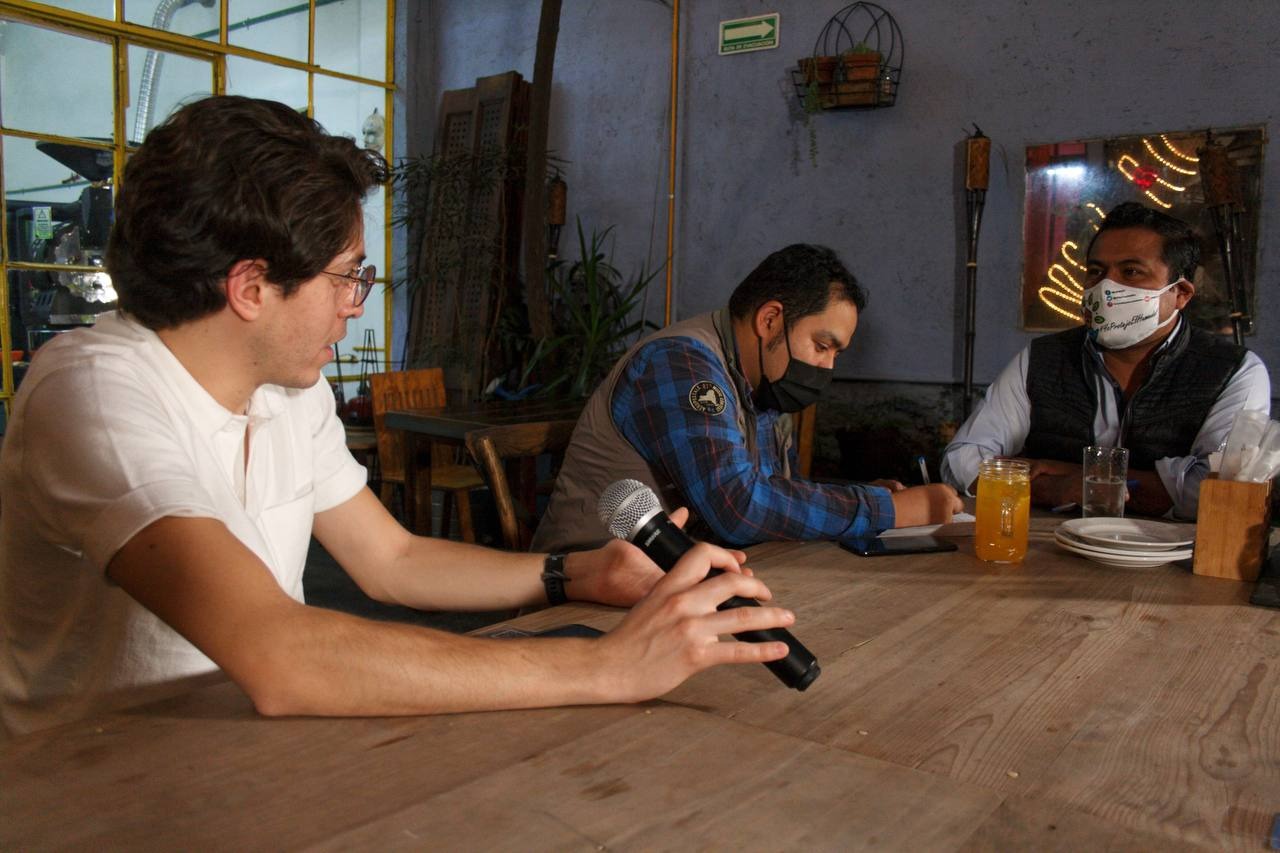
Ricardo Ovndo is part of the Water for All collective. After eight years of work by specialists and communities from different towns and neighborhoods, they presented a proposal for a new national law, which is now sitting idle in Congress.
Ovando called on president Andrés Manuel López Obrador to evaluate the necessity of passing a new water law; substituting that which was passed during Carlos Salinas de Gortari’s administration. “It’s not enough to fight corruption, which he might be doing effectively, we also need a change to the national water law, which is an example of the corruption of Carlos Salinas de Gortari’s government.”
Water in the megalopolis
Representatives from neighborhood and rural organizations in México City also participated.
Gustavo López, who is from Pedregal de Santo Domingo in Coyoacán, belongs to a neighborhood organization that is fighting the building company Quiero Casa. Since the company started working in the area, it captured water from a shallow aquifer and poured it into the sewer system. Neighbors of all ages have joined the fight for the aquifer, in an area where water is often scarce and where political parties control the supply and distribution in exchange for electoral support.
In the south of the city, since 2009, residents of the towns of Xochimilco organized against an overpass in Cuemanco. The government of Mexico City is building the six-lane overpass, putting at least three hectares of marsh land at risk. Carlos Martínez, a member of the organization Native Communities and Neighbourhoods of Xochimilco, warned that the scarcity of water will become worse as long as governments continue to implement policies allowing extraction but not requiring aquifer recharge, as has already happened.
Martínez said the collegiate tribunal has yet to put the resolution demanding an end to construction on its website; which is a way of buying time for the government of Mexico City mayor Claudia Sheinbaum to appeal the ruling and have construction of the overpass continue.
Arturo Contreras, Belén Kemch and Kau Sirenio participated in the discussion on behalf of Pie de Página.
Sirenio, a Na Savi reporter from Guerrero, said we must seek a new relationship with water than the one we currently have in the urban centers, one that is not only market based.
Otherwise, he said, it will have to come from governments.
You can watch the full discussion here [in Spanish].
Fernando Santillán is a sociologist who trained at the Autonomous Metropolitain University in Xochimilco, a photographer and a multimedia journalist. He has collaborated with media including Pie de Página, El Defensor magazine, FAHRENHEIT Magazine, and with the National Center for Social Communcation (Cencos). He showed his work in the temporary exhibition titled «1985-2007, from ruins to hope» in the Museum of Memory and Tolerance in Mexico City.
Click here to join Pie de Página’s bi-weekly English newsletter.
Ayúdanos a sostener un periodismo ético y responsable, que sirva para construir mejores sociedades. Patrocina una historia y forma parte de nuestra comunidad.
Dona

